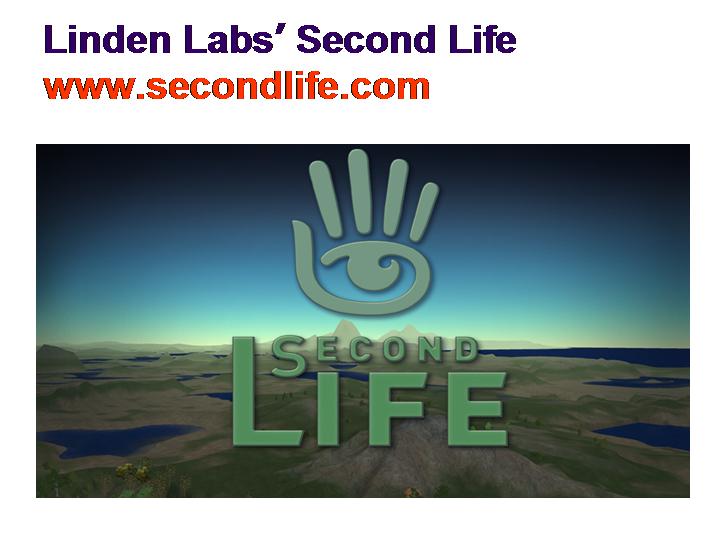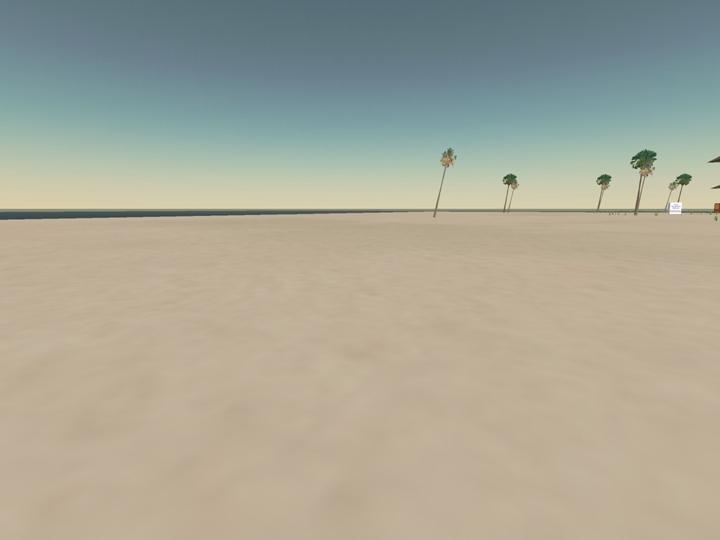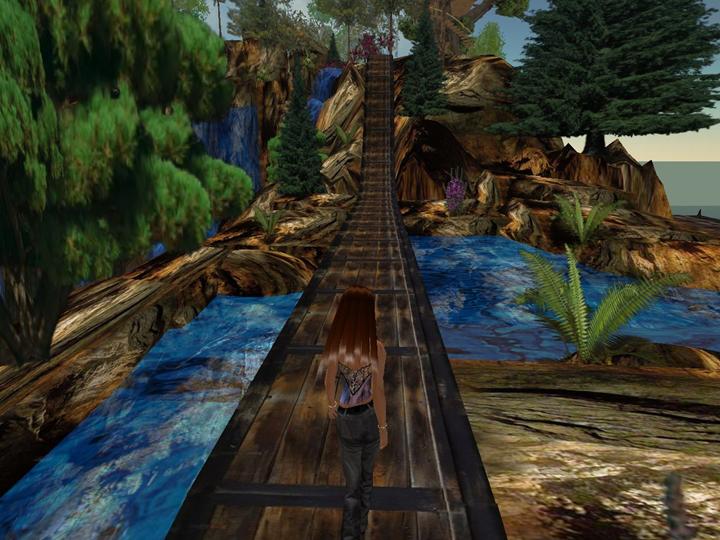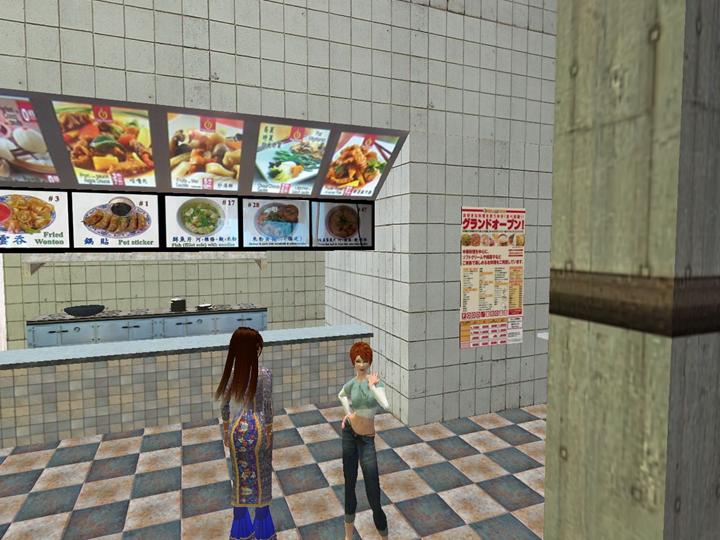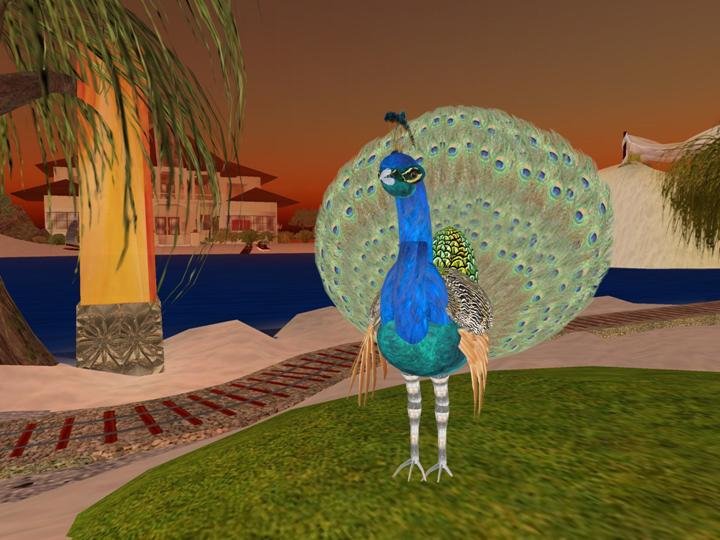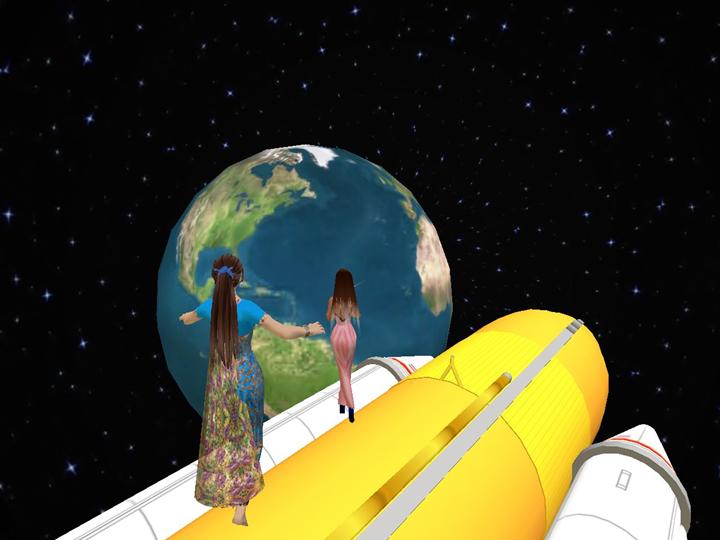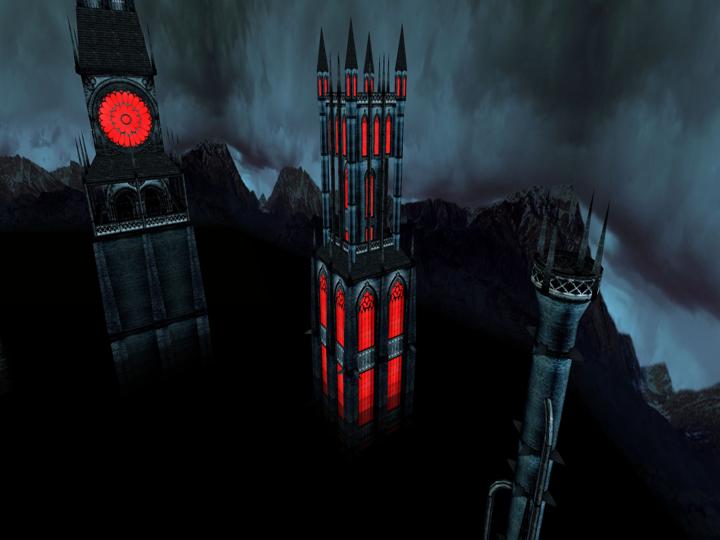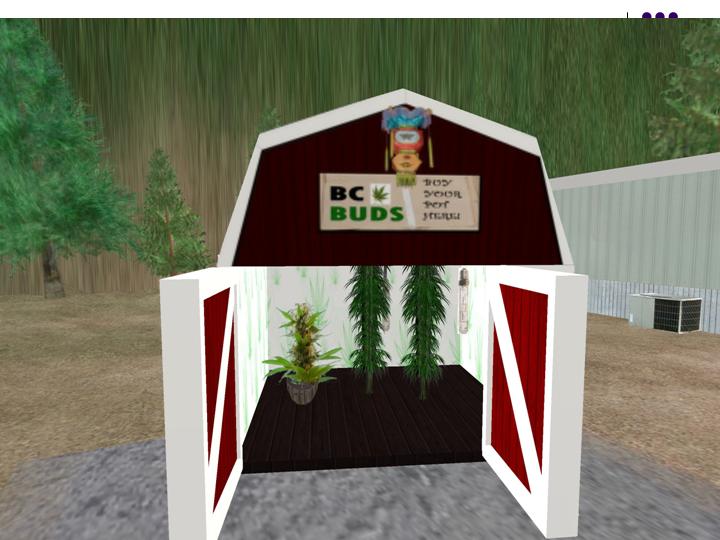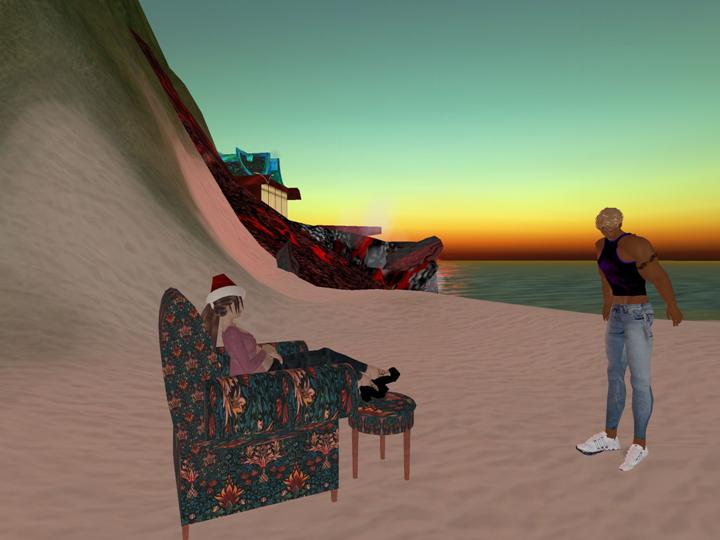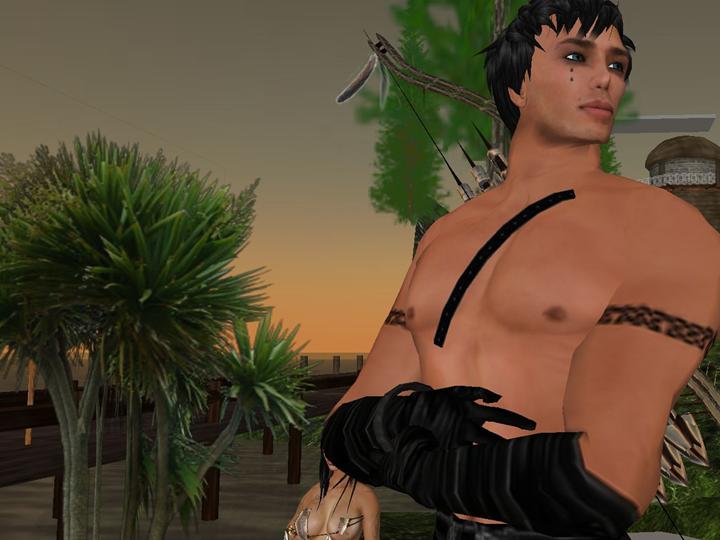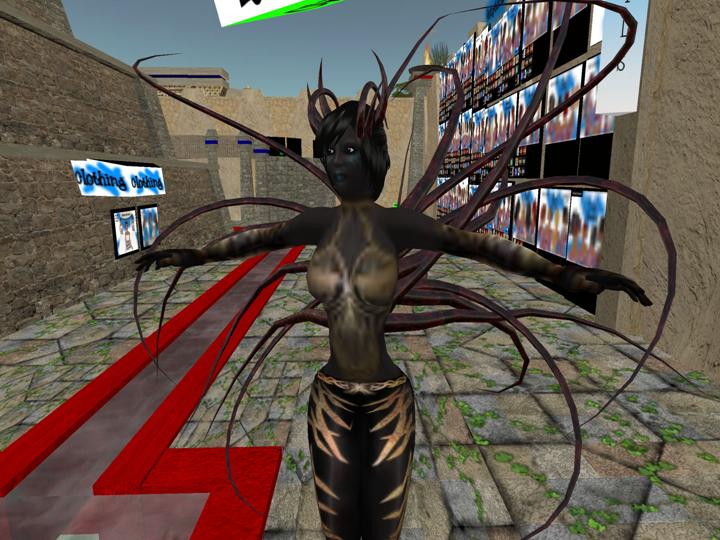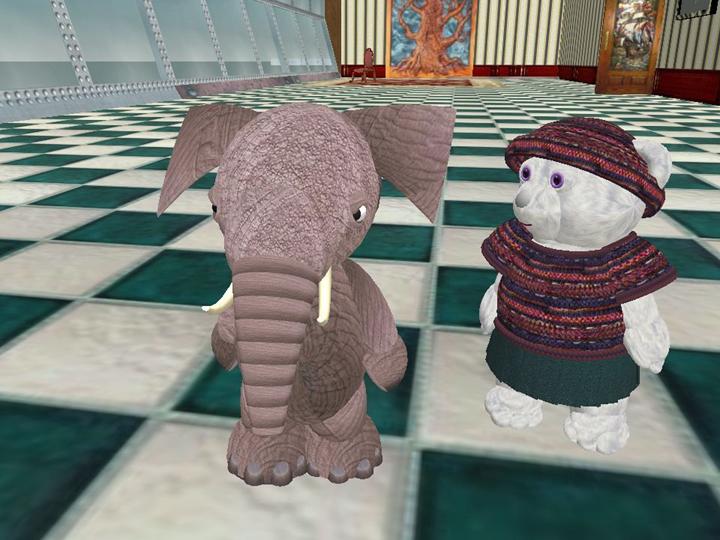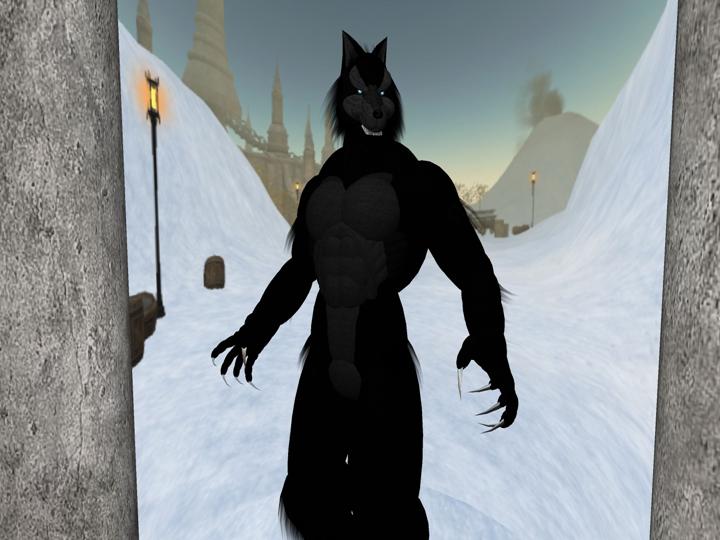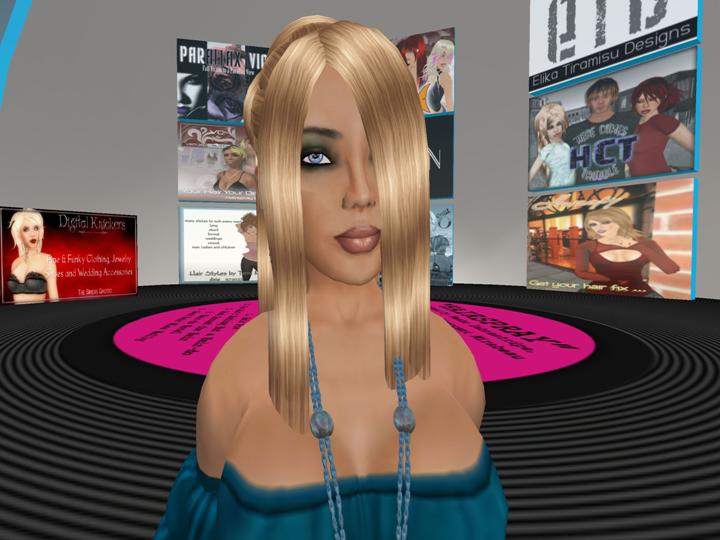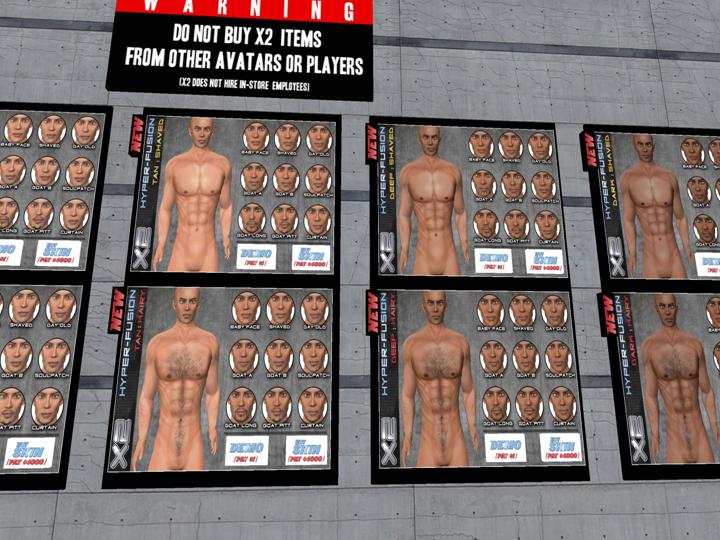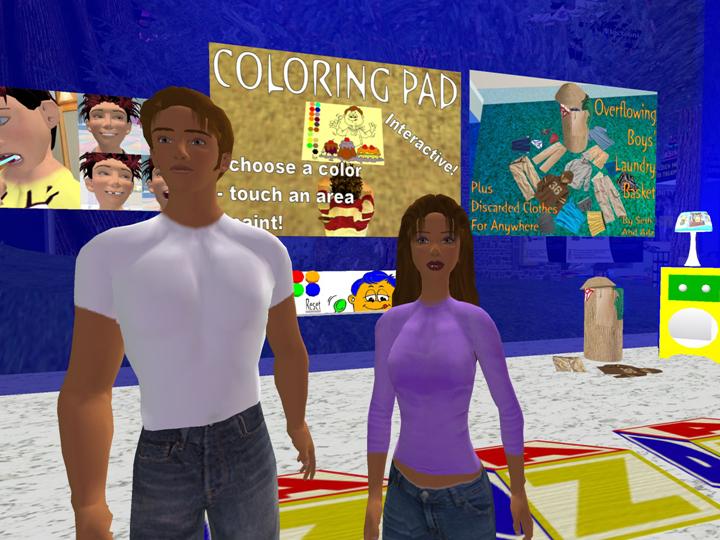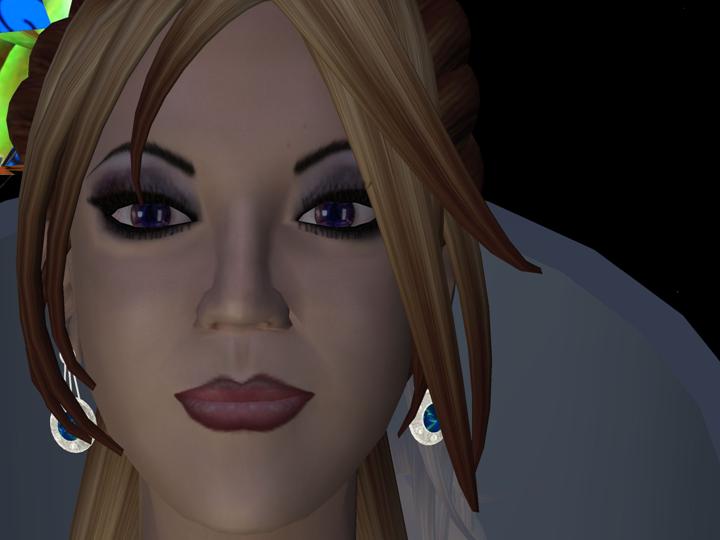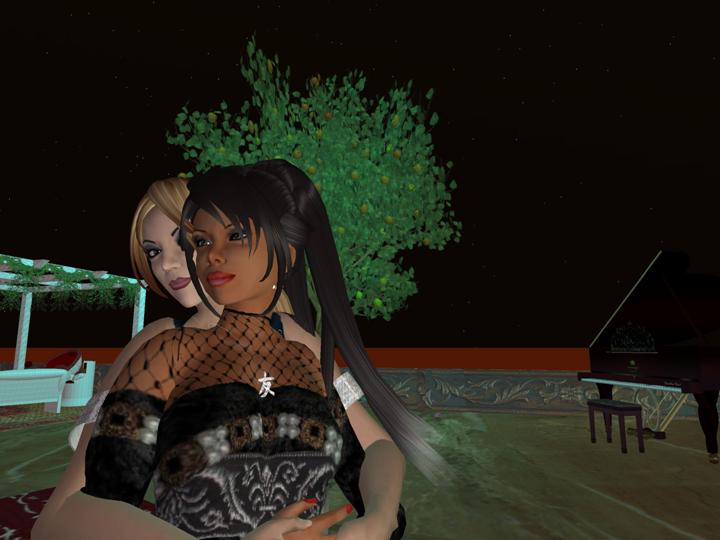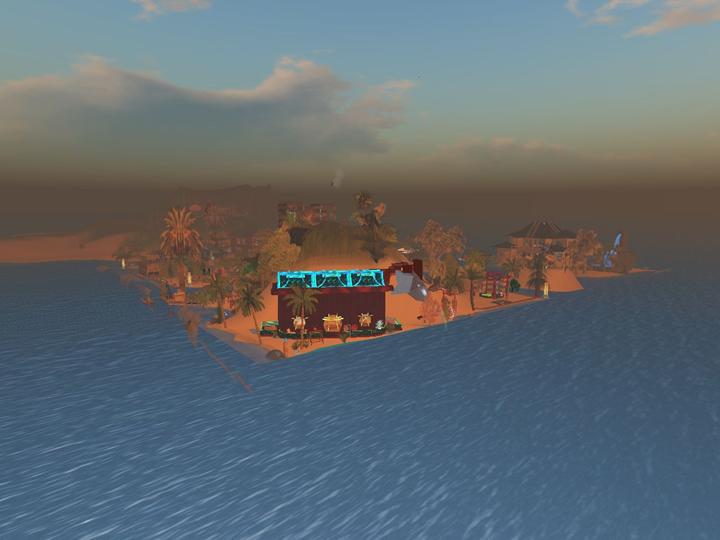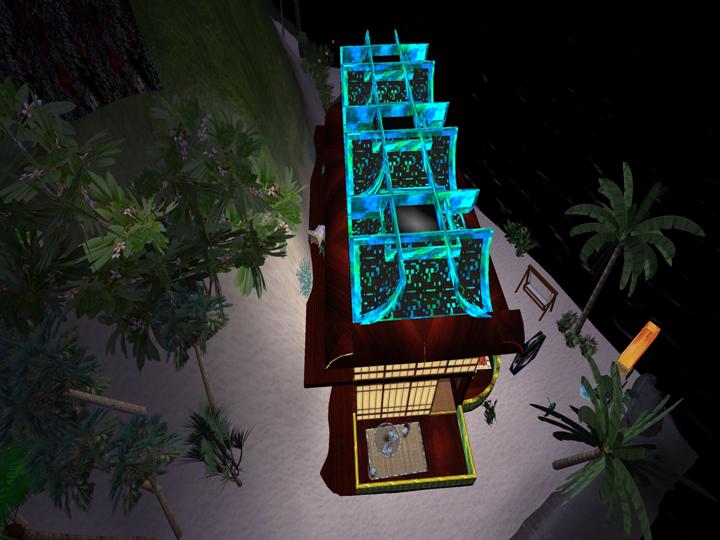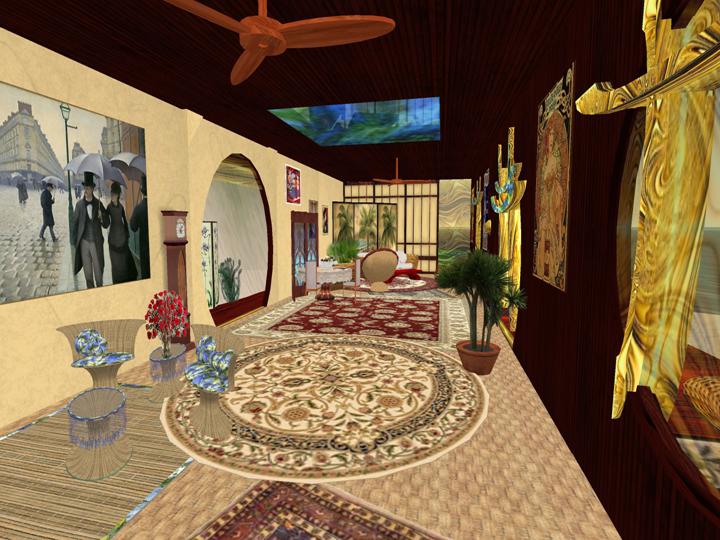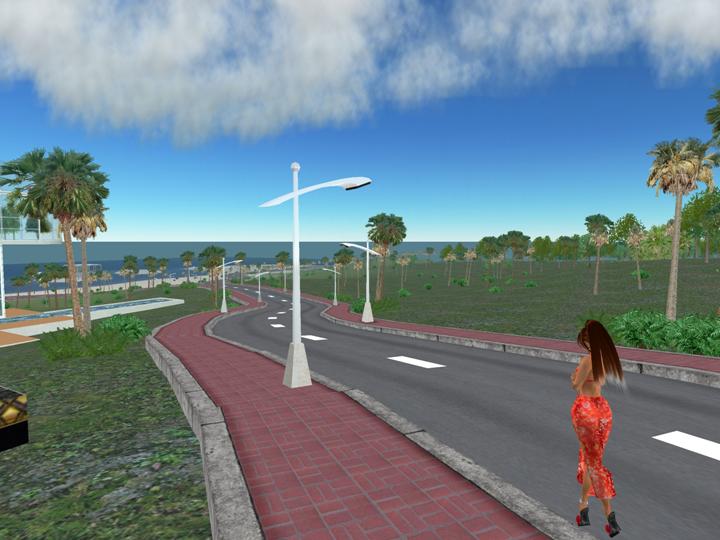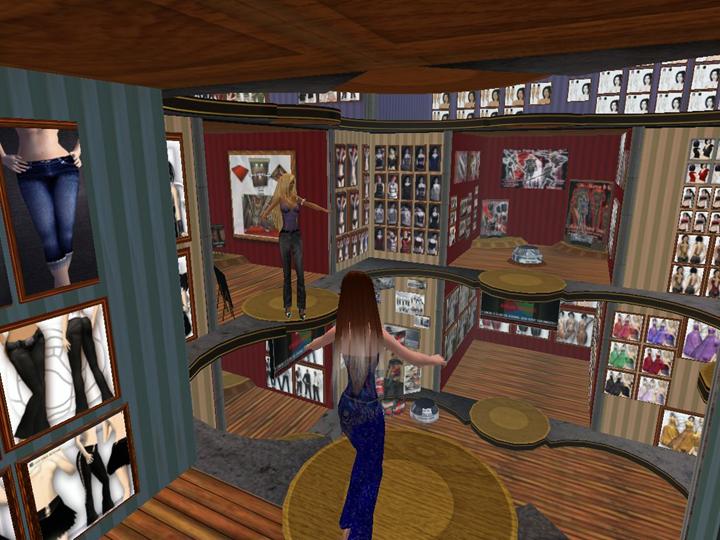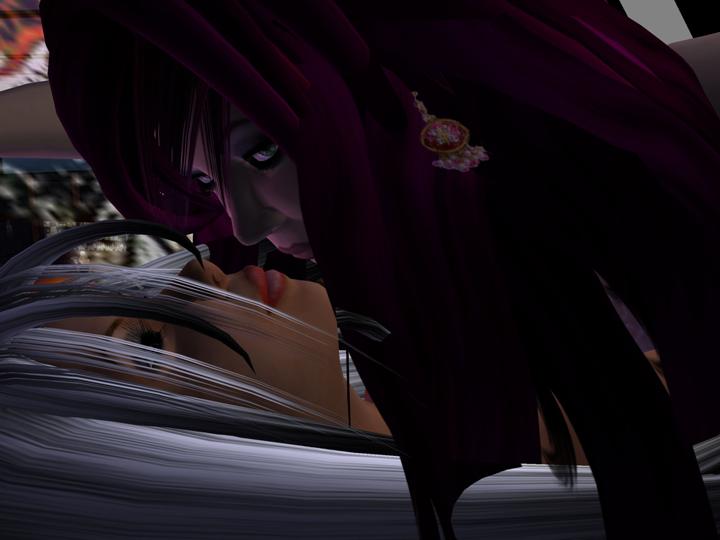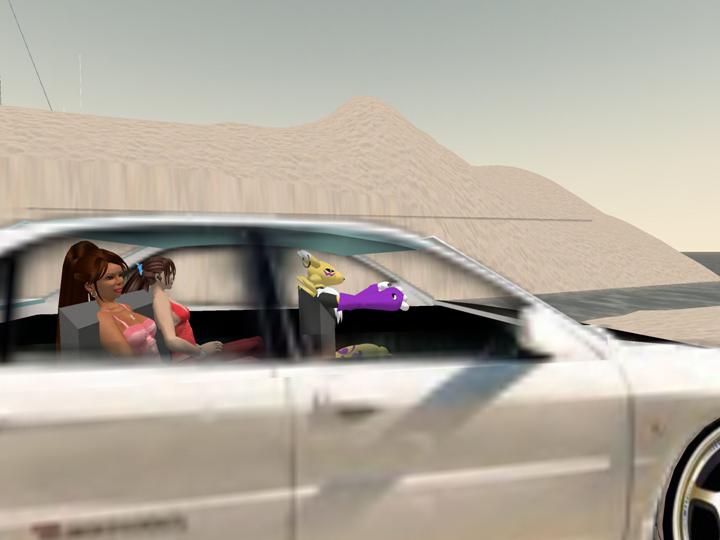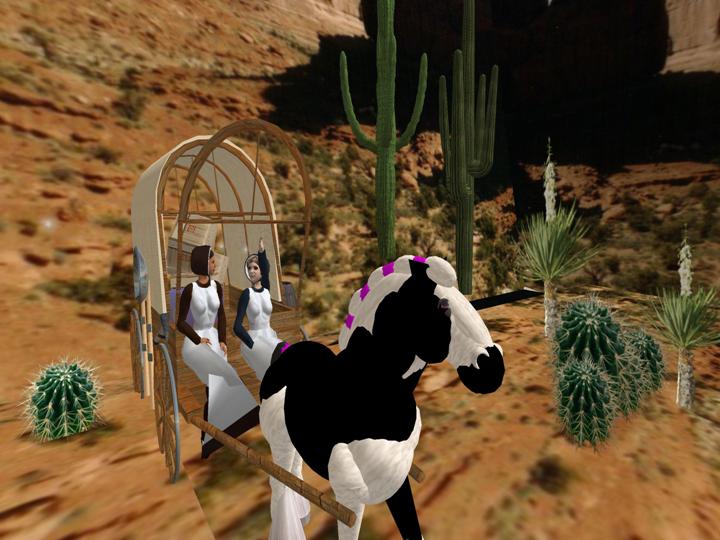Your Virtual Life is Waiting (2007)

©2007 by Dallas Denny & Heather Verdui
Source: Denny, Dallas, & Verdui, Heather Kay. (2007). Your virtual life is waiting: Transgressing gender in virtual worlds. Presentation at Fantasia Fair, Provincetown, MA, October, 2007.
What would you do if you could build a world—and a perfect body—from scratch? What would it mean if you could fly? If you were fabulously wealthy? What happens to our consciousness when we can simultaneously control multiple or inhuman bodies, each with its own personality? Computers make possible the creation of complex virtual worlds which can enrich, extend, and redefine the human experience. Linden Lab’s Second Life is such a world, a three-dimensional space created entirely by its inhabitants.
The residents of Second Life, inhabiting customized bodies called avatars, live in a world that is something beyond a game, for in Second Life, there are no artificial goals or constraints. Citizens are free to do whatever they want with whomever they want, subject only to Linden Labs’ terms of service, which broadly protect the privacy and well-being of the inhabitants. Within this framework, citizens talk, work, play, chat, create beautiful or purposefully ugly objects, make love, engage in commercial transactions, form social groups, and just generally live their second lives. They can walk, fly, ride, and teleport from place to place— and the places can be amazing.
Citizens are free to create avatars of either (or indeterminate sex), with bodies which are of any ethnicity, body type, or skin color, then enhance them with hair, clothing, and “skins” of varying look and sophistication. Thus, female avatars can be anonymously controlled by male human beings, and vice-versa. Citizens may have alternate or secondary avatars which are themselves anonymous, and they can place them in the same space and operate them independently at the same time. The ability to anonymously engage in social interactions as a member of the opposite sex makes Second Life an enticing place for gender play— not only for the transgendered, but for nontransgendered people who would never transgress gender norms in the real world.
In our slide show we talk about our second lives. Afterward, we’ll be happy to answer questions and chat about the ways gender is constructed in Second Life.
Your Virtual Life is Waiting
Transgressing Identity in Alternate Worlds
Dallas Denny and Heather Kay Verdui
This spring, at the IFGE conference in Philadelphia, I received the Virginia Prince Lifetime Achievement Award. You don’t get awards like that for being a spring chicken. You get them for years of hard work—in my case, nearly 20 years of involvement with the transgender community.What an honor it was to receive such a prestigious award! I spoke from the stage about the transgender community, and specifically about how it has changed and is changing. It’s hard to believe, but our community is only about twenty years old. Before that, we were scattered and isolated and it was—and I am speaking from personal experience here—VERY difficult to find support or even reliable information about crossdressing and transsexualism.
As the result of the work of a lot of people—including me—we now have a vital, multifaceted, amazing community of transsexuals, crossdressers, friends, partners, and supporters. Information is now only a mouse click away. We have easy access to services by caring helping professionals, and we have access to one another through the internet and through support groups and conferences like this one. The battle for transgender equality is being carried forward by myriad transgender warriors on many fronts. We are changing the world, and there are many of us. Only a few years ago, the entirety of Genderland was a frontier. Now we’ve become almost mainstream.
Some might argue with that assessment, and certainly we still have a long way to go, but no one can argue that things haven’t changed, and for the better. But in a way, I’ve missed the old days, my days on the frontier. Last year, I was looking for new frontiers. I wasn’t sure where they would be, but I was open to possibilities. At last year’s Fantasia Fair, my long-time friends Bill Furney and Pam Leffler told me about a strange and wonderful plane of existence called Second Life. It was a virtual world, a place in which they could be anyone they wanted and do almost anything imaginable. They told me they played music there and made money doing it, and they spent some of that money on beautiful clothes and manufactured goods and moved some of it into their real-life bank accounts. They were young there, and thin, and beautiful, because they chose to be. And they could teleport, and fly. Young? Thin? Rich? Able to fly? How could I say no to all that?
After the Fair, I went home and visited the website www.secondlife.com and downloaded free software, and entered the new world they had told me about, the virtual place, the Metaverse. Now it’s a year later, and I’m still there. Some of my friends have expressed concern about my immersion in this new world, and I understand and appreciate their worries. But I assure you all, I’m all right. In fact, I’ve never been better.. It took me some months to realize I had stumbled upon the very frontier which I had been seeking. I knew only that I was in a world filled with beauty and strangeness, and that I liked it there. I was on the frontier. Like all frontiers, the Metaverse will make some people uncomfortable. I’m sorry about that, but I like it on the edge. I’m going to stay here until the world catches up to me. I’m still in the real world, of course. I’ve not abandoned my responsibilities or my friends—although some of the latter doubtless think I have. It’s just busy in a new world, and working hard at strengthening my relationship, and making new friends and exercising my imagination. Communication between the frontier and the mainland has always been difficult.
Why does this virtual space, this Metaverse, as it has been called, appeal to us? Well, it attracts us for a lot of reasons. Because, like any frontier, this one is open to possibilities. Because things that concern and limit us in our first lives don’t concern and limit us there. Because there’s a well-developed social structure, and because the society there is open, largely free from discrimination, and anonymous. Because age, gender, skin color, weight, health, and physical disability aren’t limiting factors. Because the rules of the world, while consistent, are new and strange and give us the freedom to do almost anything we want.
Prelude to the Metaverse Twenty years ago, Pac-Man and Pong were cutting edge technologies. In this fast-moving world, we now consider the 80s, if not quite the Jurassic period of computing (that age would, we suppose, be the era of giant, room-filling mainframes), it is at least the Paleolithic. We have new technologies that have moved us away from the old text-only DOS command line interface into the visual, two-dimensional world of WYSIWYG, with folders and icons that, by their appearance show us their purpose. We now routinely navigate by mouse in two dimensions, by way of the desktops of the Windows and the Apple Operating Systems, and we watch videos on YouTube and talk to our friends on MySpace and buy and sell things on eBay and get the weather report and daily news on another two-dimensional invention, the World Wide Web.
So, moving from the text-only command line interface to the iconic, two-dimensional desktop has profoundly changed the way we use computers, and, consequently, the computers themselves. But there are three dimensions. And we assure you that the emerging technology of computing in three dimensions will rapidly change our society in the most profound ways. Consider the world-changing effect of the printing press, which gave us mass-produced printed words—but consider also that it took hundreds of years for the printed page to have its full impact. Consider also the telephone, which made communication instantaneous. Decades elapsed before telephones were a fixture in every home. Now consider that both technologies—printing and telecommunications—continue to grow into their potential. We’ve moved from an era of offset printing to publish-on-demand and paperless electronic reading. Where once we were lucky to have a single phone (remember that it was black and had a dial! How long has it been since you dialed a phone?), nowadays we have phones in every room, with Call Waiting and Call Return and Call ID and Redial, and answering machine—and we are migrating even away from all of this by our increased reliance on our cellular phones.
Now Apple has introduced the iPhone, which, through it’s innovative, three-dimensional display will revolutionize telephone by integrating our telephones and our computers. Now think for a moment about how profoundly the World Wide Web has changed our lives, and in only about ten years. What sorts of things can you do on the web? (ask audience—send E-Mail, Skype, buy and sell, get maps, get the news and weather, Wiki, play games, run conferences) Anyone? What sorts of things is it replacing? (catalogs, dictionaries, encyclopedias, phone books, zip code directories, reference books). The emerging 3-D computer technology—some are calling it the 3D web, but we call it The Matrix, Version 1.1—is going to be taking us on a very zippy ride in the near future.
Second Life
Just 15 years ago, in 1992, a science fiction writer described a three-dimensional virtual world, a cyber space. His name was Neal Stephenson, and in his novel Snowcrash, he called this mind space the Metaverse. In 1999—see how things are accelerating? Yahoo co-founder Philip Rosedale said to himself, “We have the technology to create the Metaverse now.” He quit his job as Chief Techology Officer at RealNetworks and began work on a virtual world to be called Second Life. Pretty much everyone thought he was crazy.
Philip Rosedale
In 1999, Philip proposed a three-dimensional virtual space in which people from all over the world would be able to interact with one another and with virtual objects while navigating in 3-D space. Pretty much everybody told him it was impossible—and it pretty much was, for several reasons.
Rosedale’s proposed world would require broad bandwidth and fast response times for tens of thousands of computers everywhere in the world. Moreover, every frame—many per second—would have to render in real time on each of those computers.
Consider how a company like Pixar constructs a scene. It’s built carefully and then each frame is rendered; complex algorithms calculate each surface and the lighting that falls upon it. It’s a processor-intensive task that can take a day or more for a single frame. And to do that in real time! Even with graphs far less detailed than Pixar’s, it just didn’t seem doable.
But worst of all was this:
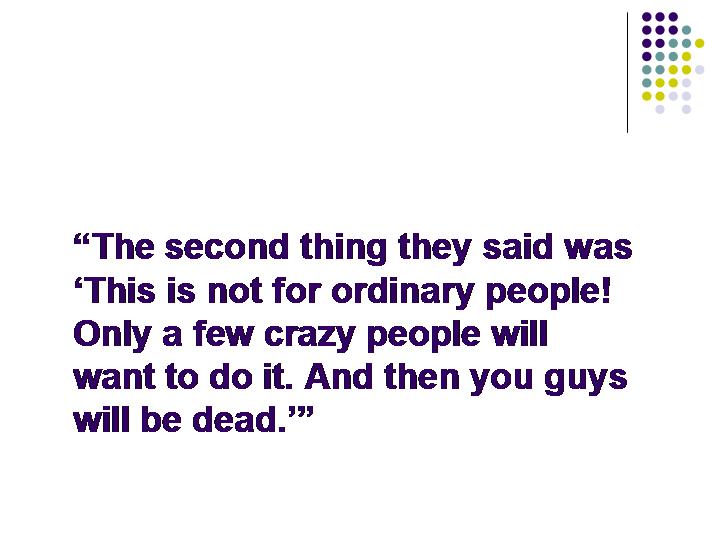 Rosedale: They said, ‘Only crazy people would want to be in such a space! “And we were saying, You [the world’s residents] are going to build everything. You are going to build these walls. And everybody was like, That’s terribly stupid. Nobody got it.”
Rosedale: They said, ‘Only crazy people would want to be in such a space! “And we were saying, You [the world’s residents] are going to build everything. You are going to build these walls. And everybody was like, That’s terribly stupid. Nobody got it.”
Rosedale was undaunted. He found financial boundaries and in 2001 opened a alpha test of what was than called Linden World. In 2003 it opened to the public as Second Life.
By 2006 Second Life was getting a lot of hype from the media and real-life corporations—and even the nation of Sweden—were establishing presences there. By 2008 the hype was gone and Linden Lab struggled to improve the in-world experience. Numbers were small—there are usually about 50,000 people in world at any one time—but the company is profitable and is used regularly by several million people.
Second Life provided three-dimensional space. Upon arrival, it looked like this:
This is the Metaverse. Yes, it’s empty. It was at first, anyway. As Rosedale said, Linden Lab was just providing the walls. He was trusting that Second Life’s residents would fill the space. And they did. And their imaginations know no bounds.
Today, Second Life is richly populated with every sort of object—vegetation, houses, cities, vehicles, avatar enhancements, robots, weapons, you name it. The residents created it all and retain the rights to it. They can sell their creations and turn the money into their local currency. Several thousand people make their livings from selling products in Second Life.
Avatars—visual representations of the people behind the keyboards— interact with one another and with the objects.
Avatars can be human or nonhuman, animal, vegetable, or mineral, a ghost or a rock.
Most avatars are human and the norm is young, thin, tall, and beautiful.
Beauty is big business in Second Life. Avatars buy clothing, shoes, hair, and even their shapes and skins.
When avatars are first created, they look like this:
Here’s how we look today. This is Chey, Dallas’ avatar…
… and this is Xubi, Heather’s avatar:
We met in Second Life in November, 2006, three weeks after Cheyenne made her account and five months after Xubi created hers. We met in real life six months later.
Here’s our home in Second Life.
It’s home also to the Polynesian volcano goddess Pele, who lives in the volcano Pele.
Exuberance built this house…
and Chey decorated it…
…but we actually live here, in a second-hand Chinese whorehouse Chey purchased for $200 Lindens, or about seventy-nine cents U.S.
We entertain our friends and visitors by giving them rides on our little train or by taking them dancing at our night club in the sky.
We rent houses to some of our friends.We created Pele, lock, stock, and barrel, by building and scripting the objects that fill it, and by purchasing ready-made goods like the Pele Light Transit steam engine shown here.
When we’re not on Pele, we’re visiting tens of thousands of other places in world…
… or dancing…
… or shopping.
Sometimes we create things.
Sometimes we’re romantic.
Sometimes we’re just silly.
We’re explorers in this new world. Early adopters of an emerging technology that has not yet realized it’s potential.
You can be a pioneer too– and here’s the thing, if you’re transgendered— you can be male or female, or openly trans in Second Life. There’s no downside in your real life, because you are anonymous in world. Only Linden Lab knows who you are, and they’re not in the gender policing business.
If you’re trans, Second Life offers you safe space to live as a member of the other sex. You do be a housewife or coal miner, or you can be a hooker or pole dancer—it’s your choice. You can live authentically, or you can explore and play with gender; it’s your choice.
We’ve left some time for further exploration of gender in Second Life. We invite you to stay and chat with us.


